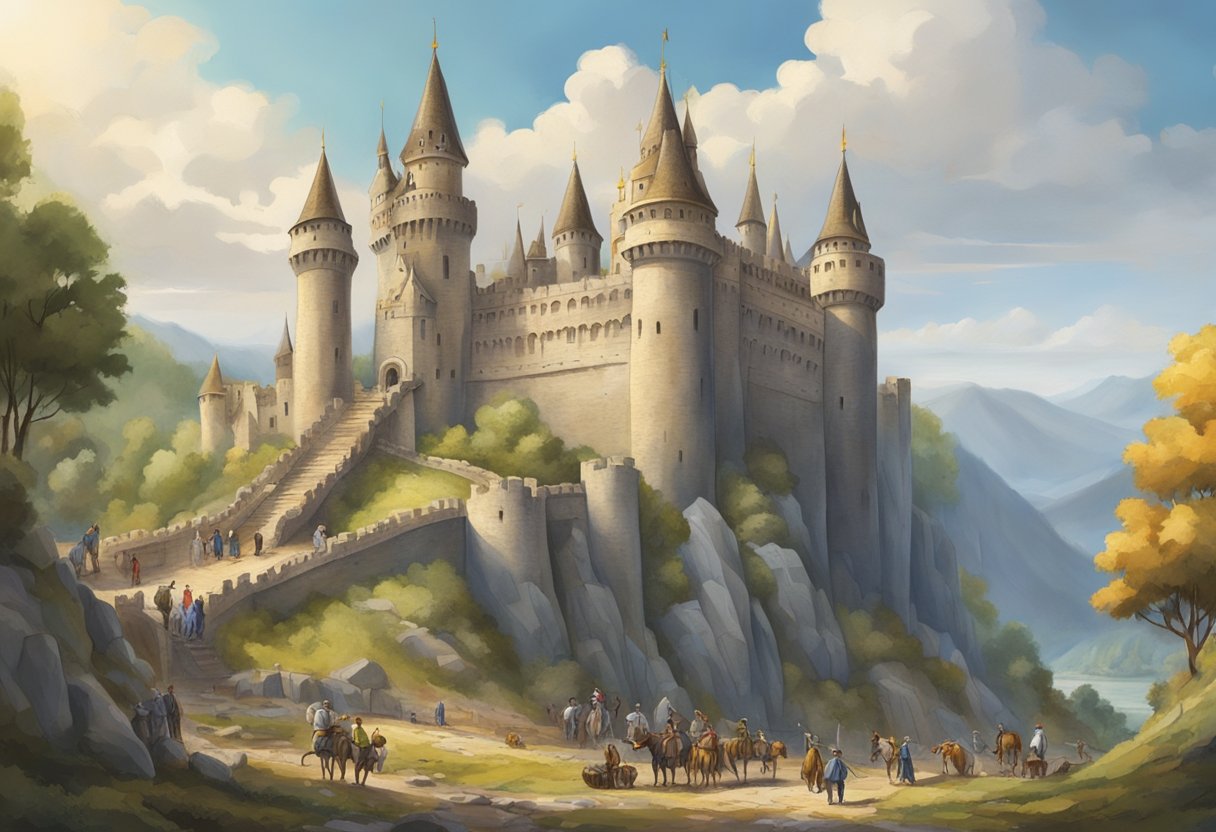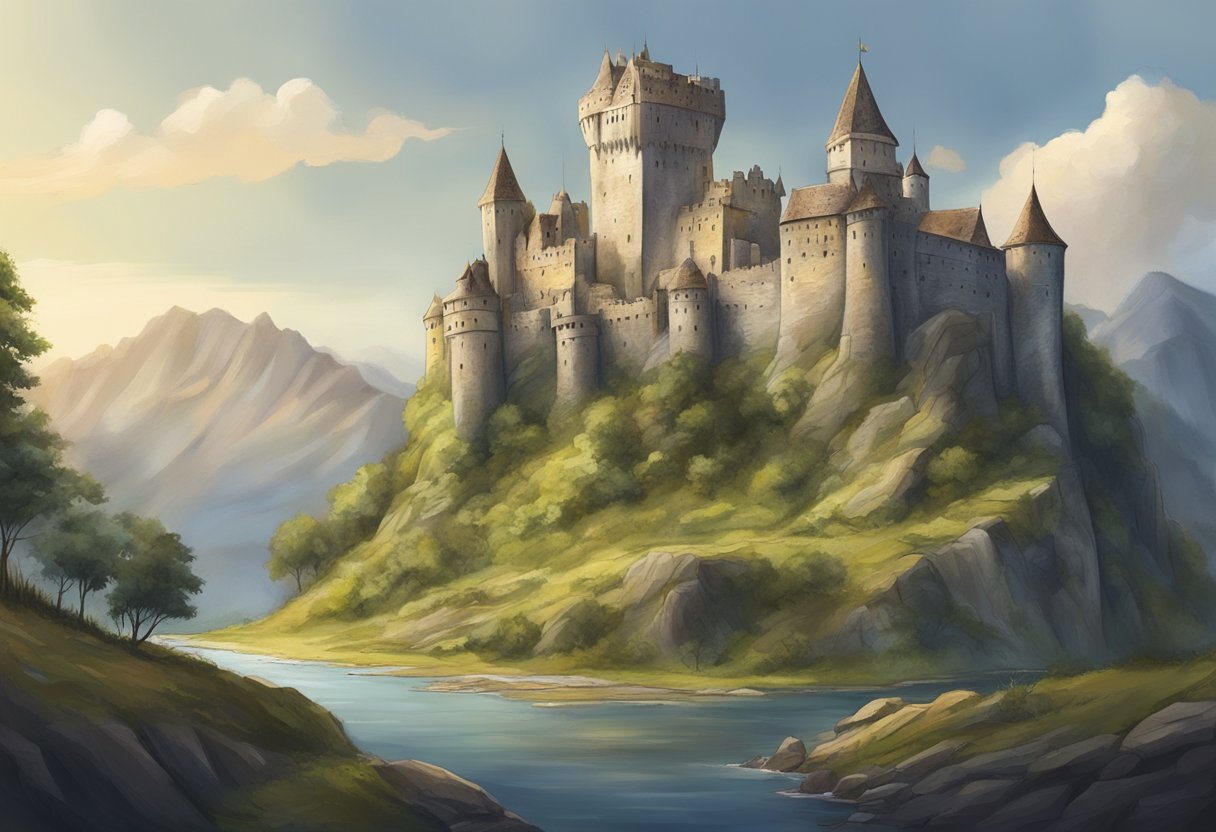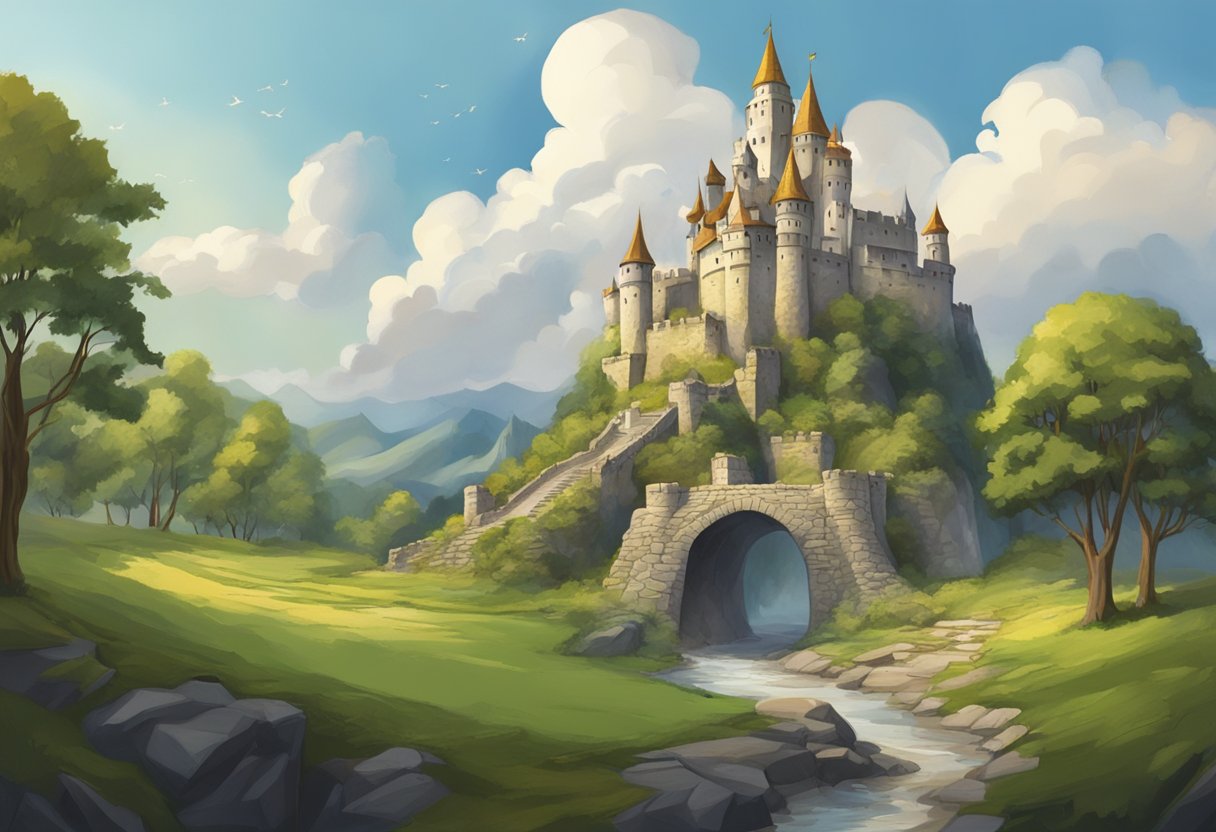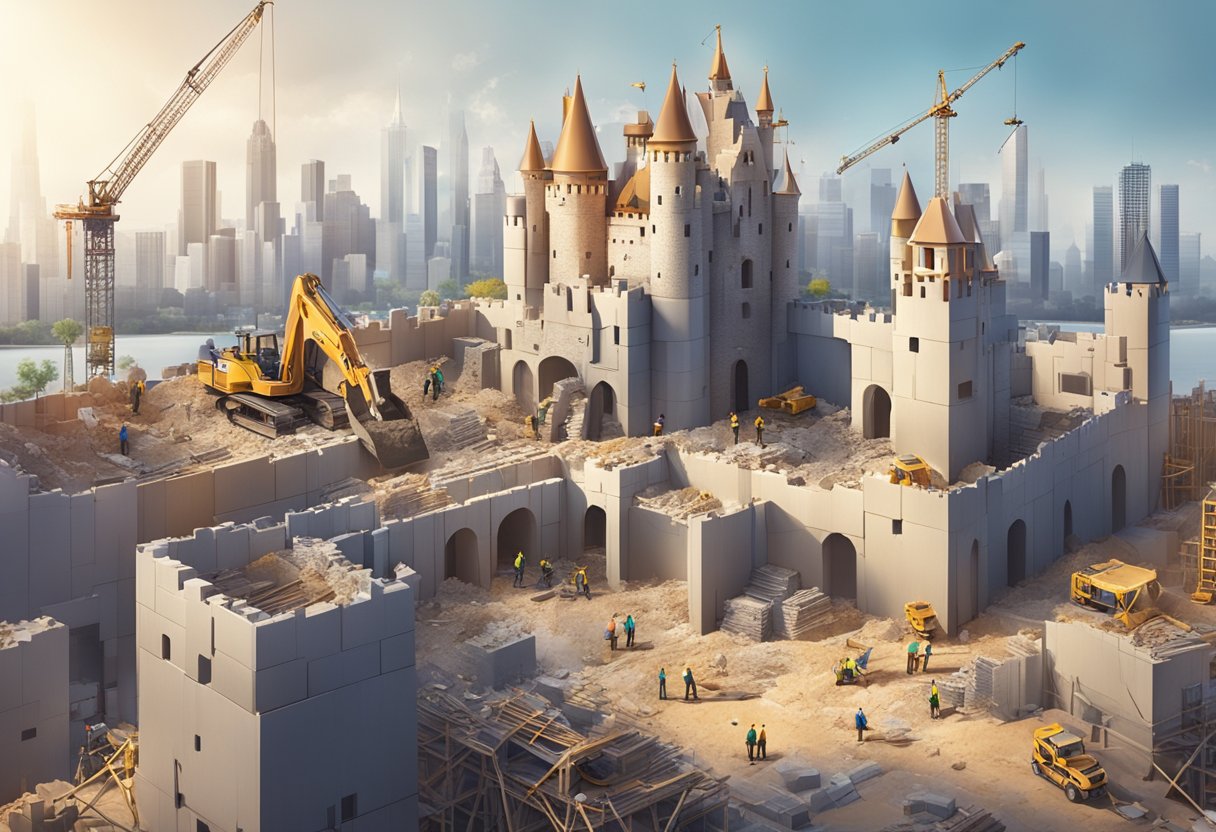Once upon a time, in the modern era no less, the question arose: Are we still crafting formidable abodes of ye olde charm, otherwise known as castles? The response to this inquiry might tickle your moat-fancying fancy—the construction of castles didn’t exit stage left with the Middle Ages. In fact, these grandiose structures are still being erected around the globe for various reasons, from historical homage to luxury living. If someone has enough gold coins (or the modern equivalent), a contemporary castle can certainly rise from the ground.

While one might not see a proliferation of castles dotting the landscapes as they did in the medieval tapestry of Europe, modern castle construction is very much alive. These structures engage with historical influence and evolution, often blending ancient architectural principles with today’s state-of-the-art technology. This eclectic mix of old and new manifests in residences that can make even the wealthiest tech mogul feel like a monarch of old—or at least like they’ve stepped into a fairytale setting infused with Wi-Fi.
Key Takeaways
- Castles continue to be built in the modern day, merging traditional aesthetics with contemporary amenities.
- Technological advances and historical appreciation influence the modern construction and design of castles.
- The evolution of castle building reflects both cultural significance and economic investment in architecture.
Modern Castle Construction
https://www.youtube.com/watch?v=CboJzrDhoSk&embed=true
In today’s world, one might think that castle building is a thing of the past, but there are still some who keep the chivalric dream alive. Those hardy souls—builders and history enthusiasts—are creating stone fortresses with the same techniques used by their medieval counterparts.
Building Techniques and Materials
Construction teams at sites like Guédelon Castle are part time travelers and full-time laborers. They’re employing methods that would make a 13th-century mason do a double take in recognition. Here’s a peek at the old-school toolbox:
- Stone: No modern concrete here, they quarry limestone the old-fashioned way.
- Wood: Timber-framed cranes match the muscle power of their ancestors.
- Design: Hand-drawn plans and models provide the blueprint.
These builders, masons, and carpenters are not just crafting walls, but stories for future generations to gawk at.
Contemporary Castle Projects
It’s not just fairy tales—there are genuine castles rising from the ground in this era. Let’s list a couple:
- Guédelon Castle: Here, a dedicated crew has been toiling since 1997, aiming to finish by 2030—only stone, wood, and iron tools allowed!
- Castle Drogo: It’s the last castle built in England, though wrapped up in the early 20th century, and it still whispers, “The age of castles isn’t over yet, folks!”
From ancient blueprints to modern-day construction sites, these projects are a testament to human ingenuity and tenacity, displaying a gallant “Yes, we can do it!” kind of attitude.
Historical Influence and Evolution

Before the reader ventures forth into the depths of history, it’s essential to understand how the sturdy bones of medieval castles have reshaped modern abodes. The stately homes dotting the landscapes of Europe today owe much to their burly ancestors, from military might to palatial elegance.
From Medieval Strongholds to Modern Mansions
Castles began as the muscle-bound workhorses of feudal society. They were the tanks of the Middle Ages, complete with stone walls that scoffed at mere swords and early morning cattle raids. Over in England and France, where they loved a good fortification as much as they loved a fine wine, castles were the ultimate statement pieces.
- 13th century military must-haves: High stone walls, moats, and drawbridges.
- Modern mansions: Swapped the drawbridge for an electronic gate, but kept the grandeur.
In todayspeak, one might consider the medieval castle the original gated community. Yet, these strongholds evolved as the need for military architecture waned and the desire for opulent living waxed. People needed fewer archers and more wine cellars. Fortresses slowly transformed into the stately homes and chateaux that now pepper Europe, delighting tourists and history buffs alike.
Architectural Features Through the Ages
Architectural elements from the looming castles of yore haven’t just vanished like a ghost through the ramparts. They’ve stuck around, like the relative who’s overstayed their welcome at a family gathering, but in a far more charming way.
- Stone walls: These behemoths of the medieval landscape morphed into the slightly less intimidating but still robust walls of today’s luxury homes.
- Moats: Once the aquatic rings of security, they’re now often reincarnated as koi ponds or infinity pools for those with a penchant for a splash of grandeur.
It’s evident that through the ages, the architectural DNA of castles has lingered in the modern home’s spiral staircases, wine cellars, and that one turret-like room everyone’s aunt seems to have for no apparent reason. The castles of Europe, particularly in England and France, where they were as common as rain, have left a blueprint that modern architects can’t seem to ignore – like medieval breadcrumbs leading straight to a McMansion.
Cultural and Economic Perspectives

While castles may seem like relics of the past, they continue to play a significant role in modern culture and economies. Let’s explore the societal curtain they draw back today, and how they prop up the coins of local communities.
The Societal Role of Castles Today
Castles were once the military strongholds of the nobility, but in modern times, their role has transitioned to become cultural landmarks. They aren’t just stone and mortar; they are narratives set in stone. Guédelon Castle in Treigny, for example, is a unique project where a castle is being built using only medieval techniques and materials. This new castle serves as a grand stage for pedagogy; it’s where history books spring to life, offering insights into medieval construction to visitors and young craftsmen alike. Here’s what they’re serving up:
- Education: They throw history off the pages and into reality.
- Cultural Conservation: Preserving the spicy flavors of medieval craftsmanship.
The Impact of Castle Building on Local Economies
When one thinks of a castle, it’s not just the walls that stand tall but the economy of the village around it too. Consider the domino effect: a castle goes up, and so do the local job charts. Tourism flourishes, bringing a caravan of money into the area. Here’s a quick snapshot:
- Jobs Galore: From the masons to the tour guides, castles are job factories.
- Visitor $$: Those selfie-snapping visitors? Each click brings in the clinks of coins.
In a nutshell, every stone placed in a modern castle lays the foundation not just for a structure, but for a thriving community, mingling the old with the new, the historical with the economic.
Case Studies and Anecdotes

In the world of castle construction, there are modern marvels that link us to the past and showcase the last flourishes of an era. These contemporary projects demonstrate the intricate craft of castle building, melding historical techniques with present-day enthusiasm.
Guédelon Castle: A Window to the Past
Guédelon Castle stands as a grand experiment in experimental archaeology, where Michel Guyot’s vision for authenticity isn’t just about wearing period costumes for a renaissance fair. On the contrary, it’s about swinging hammers and chisels as if the Black Death was just a bad memory:
- Michel Guyot: The visionary who started it all, thinking, “Why not build a castle from scratch?”
- Jacques Moulin: The mastermind architect with a T-square, ensuring the castle isn’t just a fancy pile of rocks.
- Blacksmith and Stonemasons: True to their titles, one bangs iron into nails while the others play an eternal game of Tetris with stones.
- Painter and Gardener: One daydreams in colors across the walls and the other plays in the dirt, making sure the castle grounds aren’t mistaken for a barren wasteland.
Castle Drogo: The Last Castle
Meanwhile, in the rolling hills of Dartmoor, there lies Castle Drogo, a structure that cheekily claims to be the “last castle” ever built in England, as if it had slammed the door after entering. Designed by architect Sir Edwin Lutyens, it is as much a statement as it is a building:
- It boasted modern amenities, gently reminding medieval castles of their “quaint” lack of plumbing.
- Constructed between 1911 and 1930, it whispers to the roaring twenties, “I too can be extravagant.”
Each of these castles tells a story, one crafted by the hands of those who believe that the age of castles hasn’t quite ridden off into the historical sunset. Whether they’re a backdrop for a fairytale or the ultimate DIY project, these castles keep the medieval spirit alive with every stone laid and turret raised.


Leave a Reply